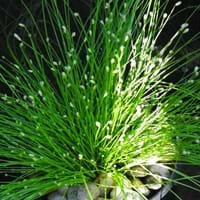Life Span
Perennial
Annual
Origin
Eastern Asia
Southern Europe, United Kingdom, Northern Africa
Types
Actinidia arguta, Actinidia giraldii, Actinidia hypoleuca
Not Available
Number of Varieties
Not Available
Habitat
Dappled Shade, open Woodlands
Grassland, Humid climates, Riverbanks, Wet forest
USDA Hardiness Zone
3-8
8-11
Sunset Zone
1a, 1b, 2a, 2b, 3a, 3b, 4, 5, 6, 7, 8, 9, 14, 15, 16, 17, 18, 19, 20
7, 8, 9, 10, 11, 12, 13, 14, 15, 16, 17, 18, 19, 20, 21, 22, 23, 24
Habit
Vining/Climbing
Arching/Fountain-shaped
Flower Color
White, Ivory
White
Flower Color Modifier
Bicolor
Bicolor
Fruit Color
Green, Yellow green
Non Fruiting Plant
Leaf Color in Spring
Green, Dark Green
Green
Leaf Color in Summer
Dark Green
Green
Leaf Color in Fall
Dark Green
Green
Leaf Color in Winter
Light Green
Green
Plant Season
Spring, Summer, Fall
Spring, Summer, Fall, Winter
Sunlight
Full Sun, Partial Sun
Full Sun, Partial Sun, Partial shade
The pH of Soil
Neutral
Neutral
Soil Drainage
Well drained
Poorly Drained
Bloom Time
Spring, Late Spring, Early Summer
Indeterminate
Tolerances
Shade areas
Drought
Where to Plant?
Ground, Pot
Container, Ground, Pot
How to Plant?
Grafting, Stem Cutting
Seedlings, Stem Planting
Plant Maintenance
Low
Medium
Watering Requirements
Average Water Needs, Requires regular watering
Keep the ground moist but not water-logged, Requires regular watering, Water when soil is dry
In Summer
Regular watering required
Lots of watering
In Spring
Moderate
Moderate
In Winter
Average Water
Average Water
Soil Drainage Capacity
Well drained
Poorly Drained
Sun Exposure
Full Sun, Partial Sun
Full Sun, Partial Sun, Partial shade
Pruning
Remove damaged leaves, Remove dead branches, Remove dead leaves
Remove damaged leaves, Remove dead branches, Remove dead leaves
Fertilizers
Apply 10-10-10 amount, fertilize twice a year
All-Purpose Liquid Fertilizer
Pests and Diseases
Botrytis head rot, Japanese Beetles, Leaf Rollers, Nematodes, Phytophthora, Root rot, Sclerotinia blight, Spider mites, Thripes
Red blotch
Plant Tolerance
Shade areas
Drought
Flower Petal Number
Single
Single
Foliage Texture
Medium
Fine
Foliage Sheen
Glossy
Glossy
Allergy
Not Available
Asthma, Skin irritation
Aesthetic Uses
Cottage Garden
Beautification
Beauty Benefits
Not Available
Not Available
Environmental Uses
Shadow Tree
Air purification
Medicinal Uses
Antioxidants, Fiber, Folate, Rich in Potassium, Vitamin C
Digestion problems, Fever
Part of Plant Used
Fruits
Whole plant
Other Uses
Grown for shade
Showy Purposes, Used as Ornamental plant
Used As Indoor Plant
No
Yes
Used As Outdoor Plant
Yes
Yes
Garden Design
Edible, Feature Plant, Vine
Bog Garden, Container, Edging, Rock Garden / Wall
Botanical Name
ACTINIDIA arguta
ISOLEPIS cernua
Common Name
Hardy Kiwi
Low Bulrush
Slender Clubrush
In Hindi
हार्डी कीवी
फाइबर ऑप्टिक घास
In German
Hardy Kiwi
Lichtwellenleiter-Gras
In French
kiwai
Fibre optique Herbe
In Spanish
kiwi hardy
Hierba de fibra óptica
In Greek
σκληραγωγημένα ακτινίδια
Οπτικών Ινών Grass
In Portuguese
kiwi Hardy
Fibra Óptica Relva
In Polish
hardy kiwi
Światłowody Trawa
In Latin
Hardy kiwi
Fiber opticus Grass
Phylum
Magnoliophyta
Not Available
Class
Magnoliopsida
Not Available
Family
Actinidiaceae
Cyperaceae
Clade
Angiosperms, Asterids, Eudicots
Angiosperms, Commelinids, Monocots
Tribe
Not Available
Not Available
Subfamily
Actinidiaceae
Pooideae
Number of Species
Not Available
Importance of Hardy Kiwi and Fiber Optic Grass
Want to have the most appropriate plant for your garden? You might want to know the importance of Hardy Kiwi and Fiber Optic Grass. Basically, these two plants vary in many aspects. Compare Hardy Kiwi and Fiber Optic Grass as they differ in many characteristics such as their life, care, benefits, facts, etc. Every gardener must at least have the slightest clue about the plants he wants to plant in his garden. Compare their benefits, which differ in many ways like facts and uses. The medicinal use of Hardy Kiwi is Antioxidants, Fiber, Folate, Rich in Potassium and Vitamin C whereas of Fiber Optic Grass is Digestion problems and Fever. Hardy Kiwi has beauty benefits as follows: Not Available while Fiber Optic Grass has beauty benefits as follows: Not Available.
Compare Facts of Hardy Kiwi vs Fiber Optic Grass
How to choose the best garden plant for your garden depending upon its facts? Here garden plant comparison will help you to solve this query. Compare the facts of Hardy Kiwi vs Fiber Optic Grass and know which one to choose. As garden plants have benefits and other uses, allergy is also a major drawback of plants for some people. Allergic reactions of Hardy Kiwi are Not Available whereas of Fiber Optic Grass have Asthma and Skin irritation respectively. Having a fruit bearing plant in your garden can be a plus point of your garden. Hardy Kiwi has no showy fruits and Fiber Optic Grass has showy fruits. Also Hardy Kiwi is not flowering and Fiber Optic Grass is not flowering . You can compare Hardy Kiwi and Fiber Optic Grass facts and facts of other plants too.





